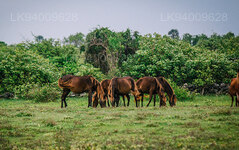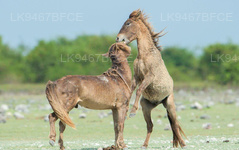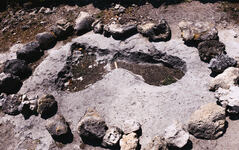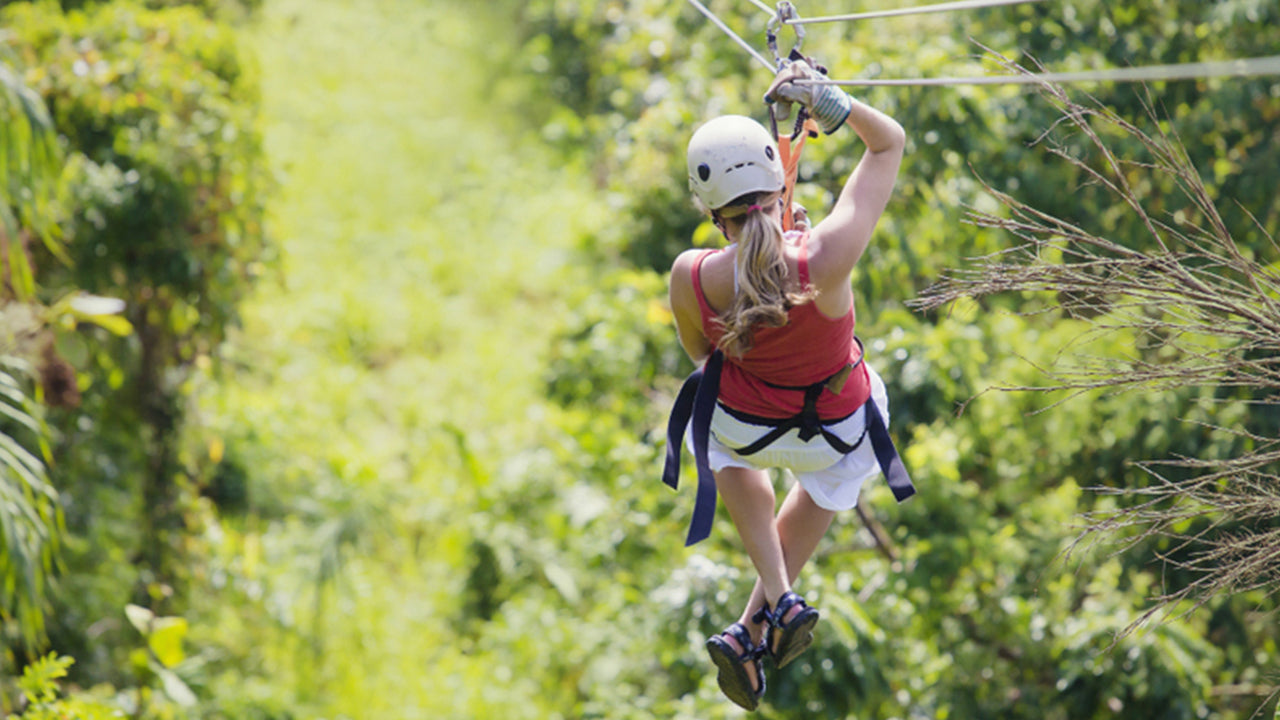Delft Island
Neduntheevu or Nedunthivu is an island in the Palk Strait, northern Sri Lanka. This island is named as Delft in the Admiralty Chart unlike the other islands, whose names are Tamil. The island's area is 50 km2 and it is roughly oval-shaped. Its length is 8 km and its maximum width about 6 km.
Neduntheevu is a flat island surrounded by shallow waters and beaches of coral chunks and sand. It is home to a small population of Tamil people, mostly living in quiet compounds close to the northern coast. The vegetation is of a semi-arid tropical type, with palmyra palms, dry shrubs and grasses that grow on the pale grey porous coralline soil. Papayas and bananas grow close to the local people's homes. In the western coast of the island there are remains of a 1000-year-old temple built by the Chola Dynasty, as well as the ruins of a Dutch colonial fort. The water is slightly brackish, and it is taken from shallow wells using buckets made from palmyra palm leaves. A naval battle was fought off the coast of the island in 2008 during the Sri-Lankan Civil War. There are feral ponies on the island, descendants of forebears abandoned there in the Dutch period.
The island was named after the Dutch city of Delft by "Rijckloff van Goens". He named the eight most important islands after Dutch cities.
Attractions In Delft:
- Delft Island Fort
- Baobab Tree and Banyan Tree
- The Giant Footprint
- Queen’s Tower
- Growing Stone
- Pigeon Cote
- Old Dutch Hospital
- Feral Horses and Stables
About Jaffna District
Jaffna is the capital city of the Northern Province, Sri Lanka. 85% of the populations of the Jaffna and Kilinochchi districts are Hindus. The Hindus follow the Saivite tradition. The remainders are largely Roman Catholics or Protestants, some of whom are descendants of colonial settlers, known as Burghers. The Tamils are divided along caste lines, with the farmer-caste Vellalar forming the majority. Sea products, red onion, and tobacco are the main products in Jaffna.
Jaffna is home to beautiful Hindu temples. An Old Dutch Fort still stands well preserved within which is an old Church. Another example of Dutch architecture is the King's House. No visit to Jaffna is complete without tasting the exquisite Jaffna mango, reputed for its sweetness. About 3 km away is the majestic Nallur Kandaswamy Temple, home to the largest religious festival in Jaffna. The Kayts Harbour is an ancient ship docking site in the Jaffna region.
About Northern Province
The Northern Province is one of the 9 provinces of Sri Lanka. The provinces have existed since the 19th century but they didn't have any legal status until 1987 when the 13th Amendment to the 1978 Constitution of Sri Lanka established provincial councils. Between 1988 and 2006 the province was temporarily merged with the Eastern Province to form the North-East Province. The capital of the province is Jaffna.
Northern Province is located in the north of Sri Lanka and is just 22 miles (35 km) from India. The province is surrounded by the Gulf of Mannar and Palk Bay to the west, Palk Strait to the north, the Bay of Bengal to the east and the Eastern, North Central and North Western provinces to the south.The province has a number of lagoons, the largest being Jaffna Lagoon, Nanthi Kadal, Chundikkulam Lagoon, Vadamarachchi Lagoon, Uppu Aru Lagoon, Kokkilai lagoon, Nai Aru Lagoon and Chalai Lagoon.Most of the islands around Sri Lanka are to be found to the west of the Northern Province. The largest islands are: Kayts, Neduntivu, Karaitivu, Pungudutivu and Mandativu.
The Northern Province's population was 1,311,776 in 2007. The majority of the populations are Sri Lankan Tamils, with a minority Sri Lankan Moor and Sinhalese population. Sri Lankan Tamil is the major language spoken in the province by the vast majority of the population. The other language spoken is Sinhala by 1 percent of the population. English is widely spoken and understood in the cities.













